SciArt profiles: Dorotea Fracchiolla
Posted by the Node, on 12 April 2021
Our seventh profile in the series features Dorotea Fracchiolla, who works as a Project Manager in Frankfurt and is also a scientific illustrator.
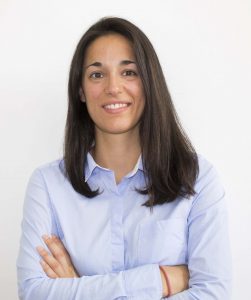
Where are you originally from and what do you work on now?
I’m originally from Ruvo di Puglia, a town in the province of Bari, Puglia, South Italy. I worked as a Postdoctoral fellow in the field of in vitro reconstitution of Autophagy at the University of Vienna in Austria. In January 2021 I started working at the Max Planck Institute for Biophysics in Frankfurt (Germany) as a Project Manager of an International research collaboration that aims at studying Parkinson’s Disease pathogenesis. In April last year I started my project as a scientific illustrator and founded Art&Science, which gave me the chance to work with many scientists worldwide on art projects in different fields.
Has science always been an important part of your life?
I’ve always been a curious person and with some difficulty in finding THE subject to study. At school I liked everything and was always excited to start reading about new things. In this sense I think I’ve always been a scientist in everyday life. Later on, the actual scientific training provided me with material to feed my curiosity and exercise critical thinking.
And what about art?
Drawing, painting, crafting and trying out new materials were my preferred activities as a child/teenager. Soon enough I started photography, too. All these activities had an aspect in common: sensing. In other words, exploring the world around me, experiencing the new, interacting.
What or who are your artistic influences?
During my studies I have always been attracted by the personality and life of Leonardo da Vinci, an artist and a scientist in one person. As for him, my place of inspiration is Nature. In the beginning, I used to draw things at a macroscopic scale that I had observed while exploring, then I ended up depicting the molecular mechanisms of nano machines like those scientists study in labs. When it comes to style, I think I cannot underplay the influence on me of my place of origin, in its light and bright colors. One example: here in Puglia there is a tradition to make colored clay whistles as local art pieces. Among others, I have recently built a clay model of a set of proteins that participate in the formation of autophagosomes in cells. I think it grossly resembles in style these artcrafts.
How do you make your art?
For me, making art comes after creating an idea in my mind. The creation cannot precede the study and understanding of the subject. I start from reading and while doing so I put together images in my head that finally make up the puzzle. If something is not clear I keep reading until the full picture is completed. My motto is: if you can draw it, you understood it in the first place.
Does your art influence your science at all, or are they separate worlds?
In my opinion, art and science are tightly connected and rely on each other. This is why I named my activity as an illustrator ‘Art&Science’. Very often, while studying a new topic, I tend to first visualize things and make schematics of concepts. Simplification is my approach to understanding. That’s when the art comes into play: it depicts the core message and makes it simple for the eye to grasp.
“Art depicts the core message and makes it simple for the eye to grasp”
Tell us about the work you’ve shared with us.
One project turns around the topic of autophagosome formation. I started drawing these pieces during my PhD when I learnt hardcore biochemistry in the Laboratory of Prof. Sascha Martens at the University of Vienna while studying autophagy in his lab. The entire team was focused on getting recombinant purified components of the autophagy machinery and studying their properties in vitro. The goal was to understand how the different proteins work together to build autophagosomes. Scientific research needs to be coupled to a certain degree of imagination in order for questions to arise. I always liked to visualize things and my preferred way to convey a message is drawing.
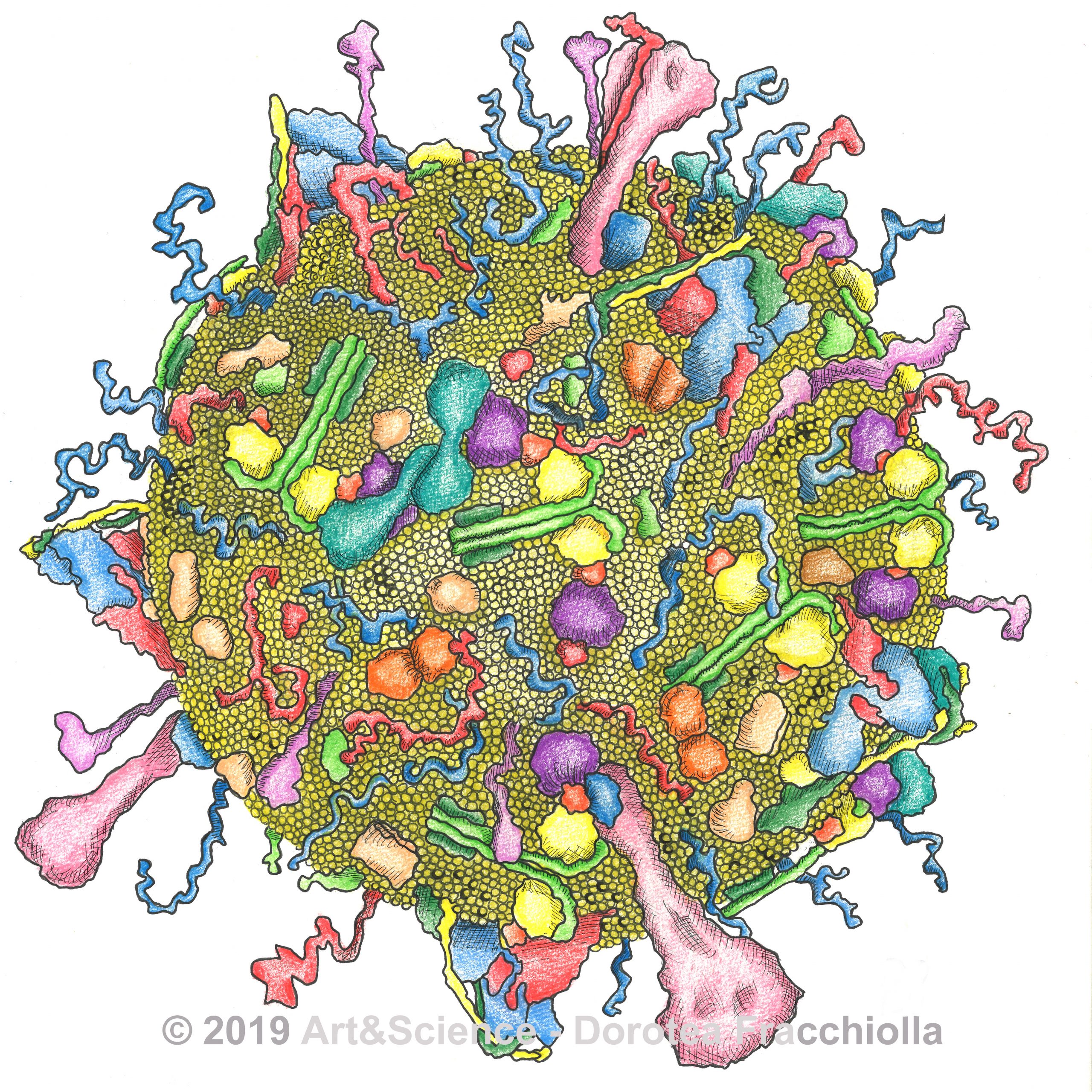
Supported by structural biology data, I started off sketching how I thought the molecular machinery looks like, and that’s how the “Autophagosome Biogenesis” project arose.
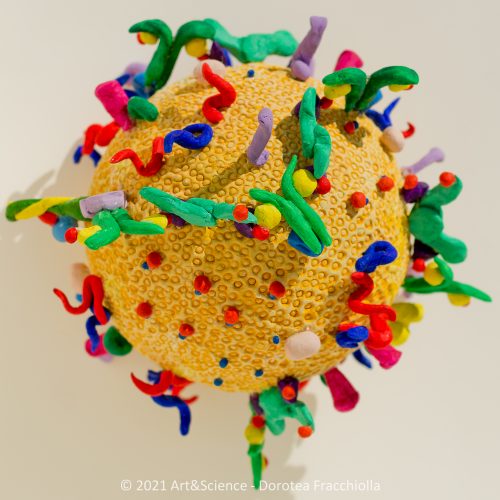
Clay model, top view 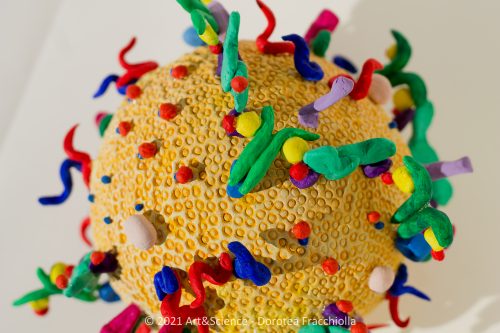
Clay model, top view, close up 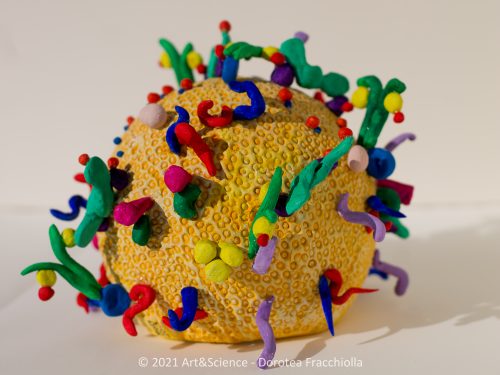
Clay model, side view 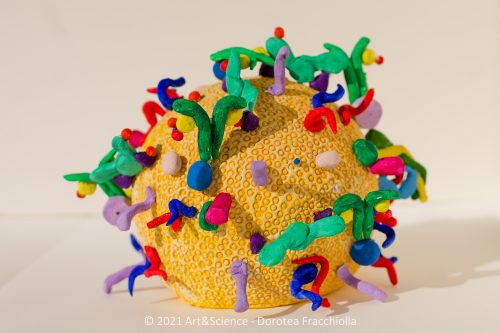
Clay model, side view 2 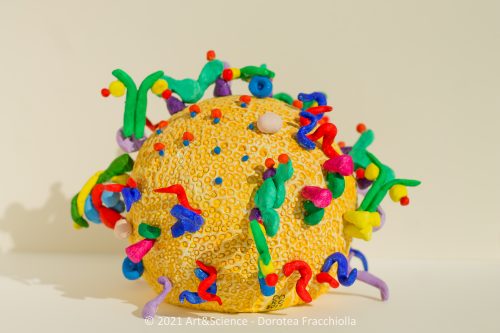
Clay model, front view
I first made the drawing and then I created a 3D clay model as shown in the gallery above.
This model was then used as a basis for a stop motion animation (for more information about this movie see my website).
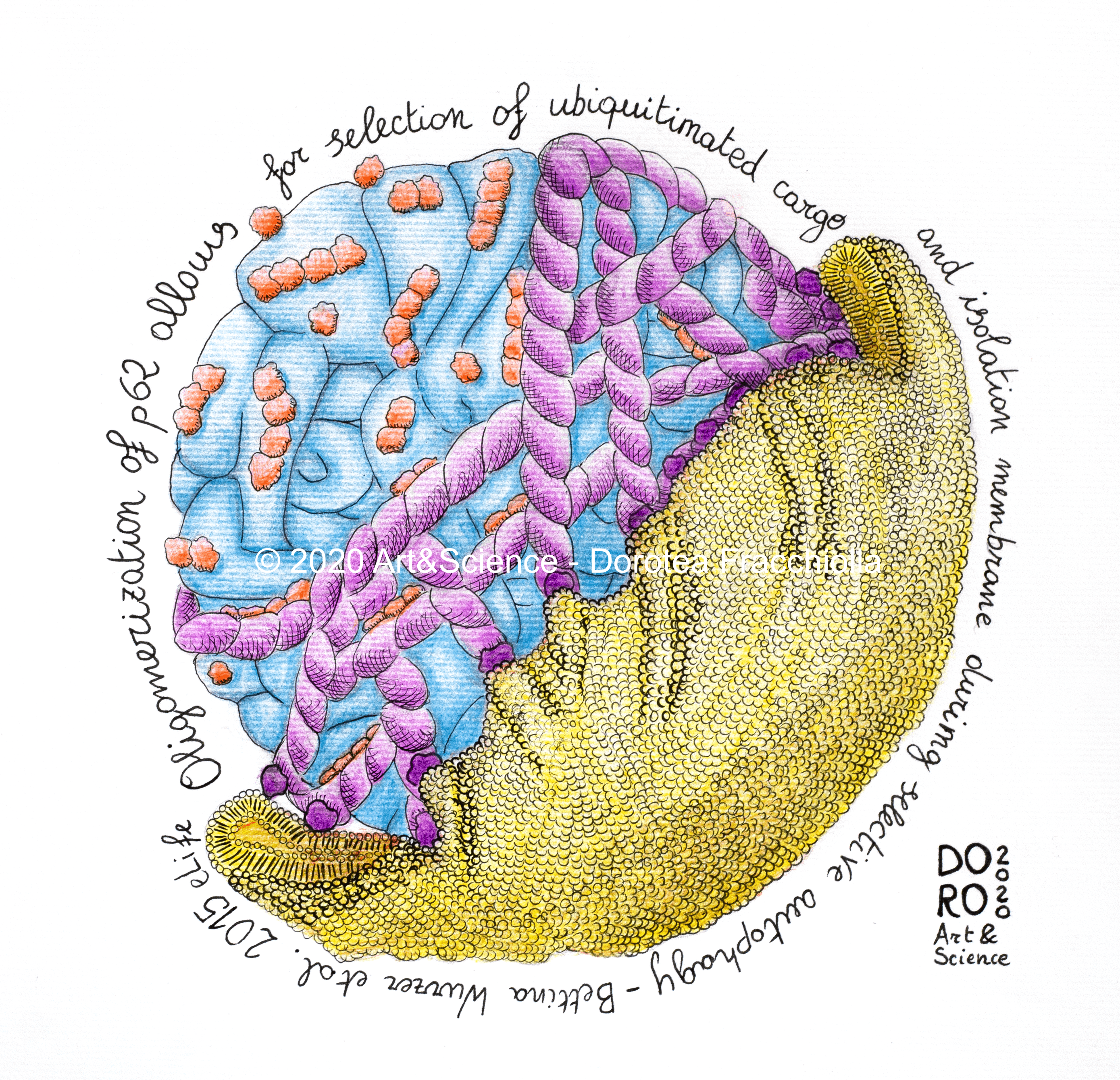
Next is my Ub-p62-cargo illustration: like a sticky sugar muffin that gets stuck in its paper wrap, ubiquitin-tagged misfolded protein aggregates are tightly attached to LC3-positive isolation membranes via p62 during selective autophagy in human cells. I created this for the following publication: https://elifesciences.org/articles/08941
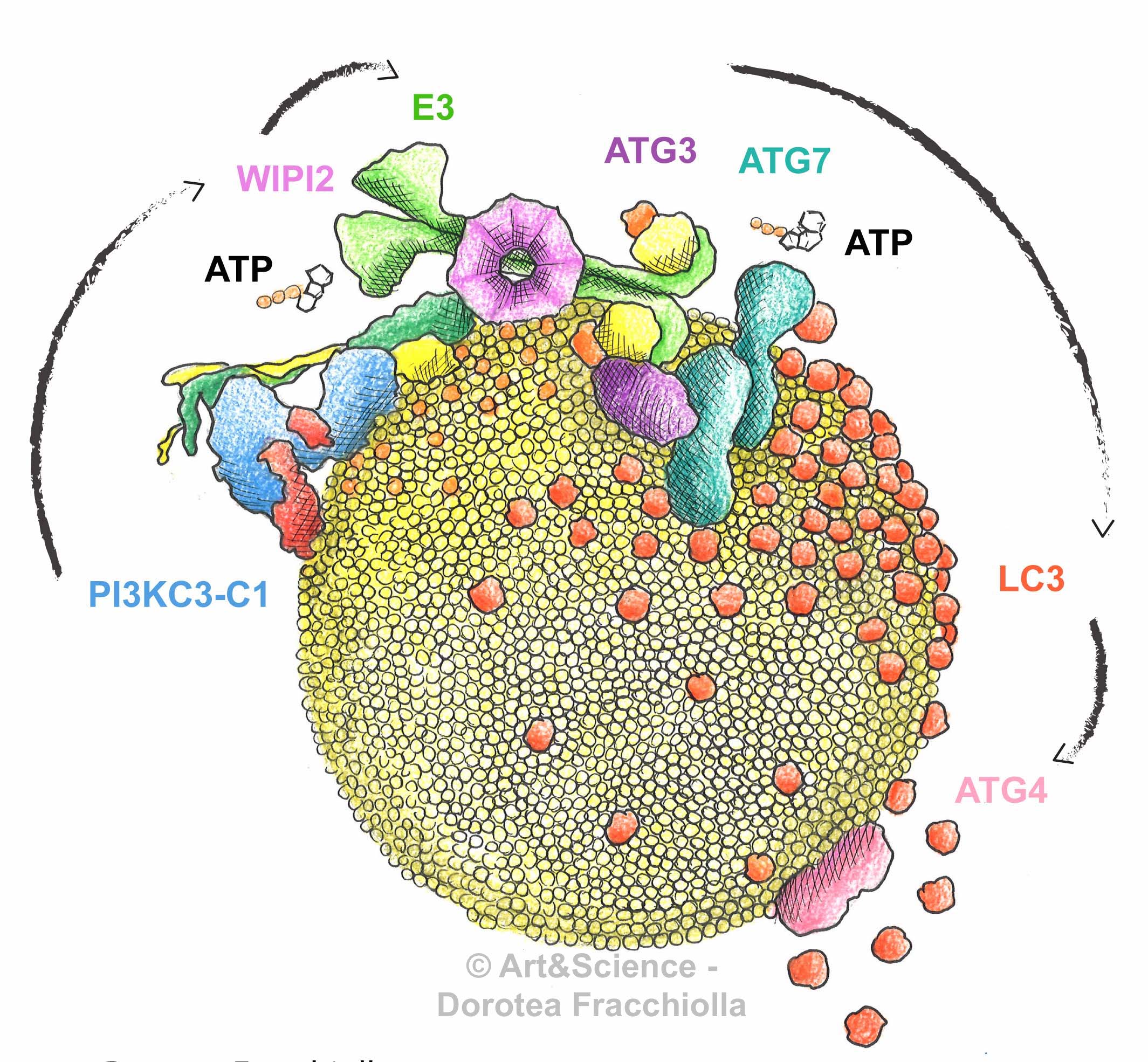
This Graphical Abstract, was made for this other publication: https://rupress.org/jcb/article/219/7/e201912098/151802/A-PI3K-WIPI2-positive-feedback-loop-allosterically?searchresult=1
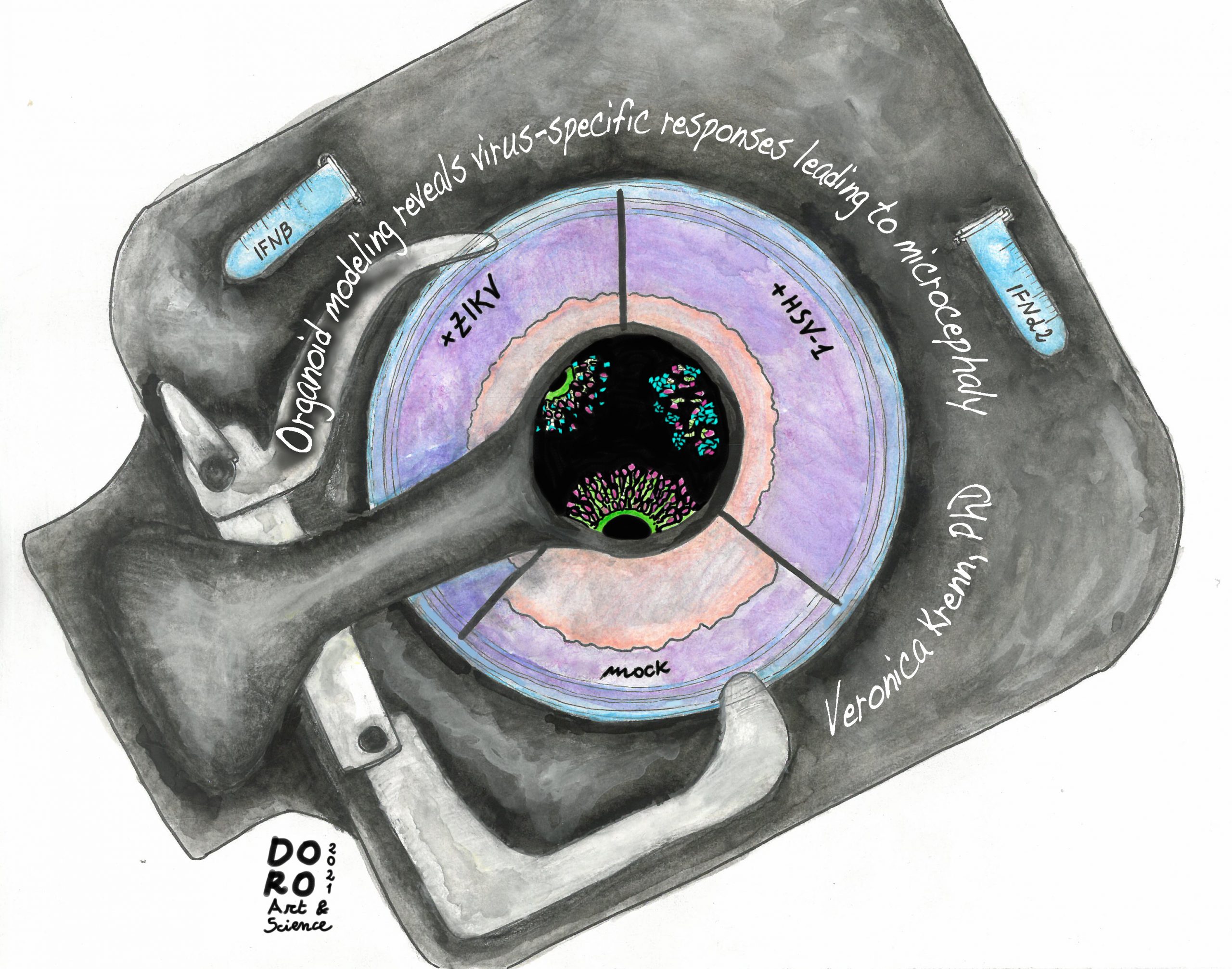
This cover art was created for the following paper: https://www.sciencedirect.com/science/article/abs/pii/S1934590921001107?via%3Dihub
Finally, this gallery shows a lab life series done with acquerells. I created this one during lockdown as well because I was a bit nostalgic for the lab.
What are you thinking of working on next?
Like everyone, I have a dream in the drawer: I would love to illustrate a book, a short collection of recent scientific discoveries made into figures for students. The idea comes not only from the fun I’d have in engaging with such a project but also from my belief that if you make something interesting for students, they will enjoy studying it. At school, drawing things was my way to make things simple for myself – when things are simple it is easier to understand them, and in turn appreciate them.
Check out Dorotea’s website: www.my-art-science.com
We’re looking for new people to feature in this series throughout the year – whatever kind of art you do, from sculpture to embroidery to music to drawing, if you want to share it with the community just email thenode@biologists.com (nominations are also welcome!).


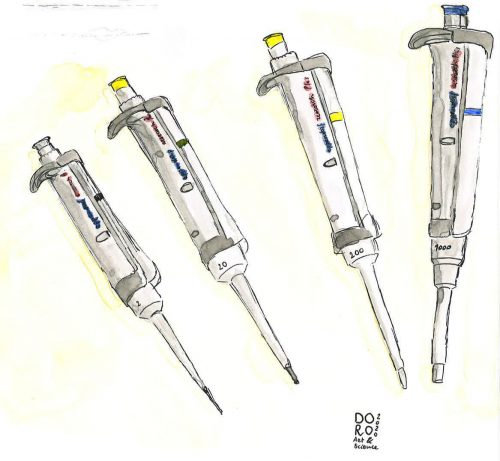
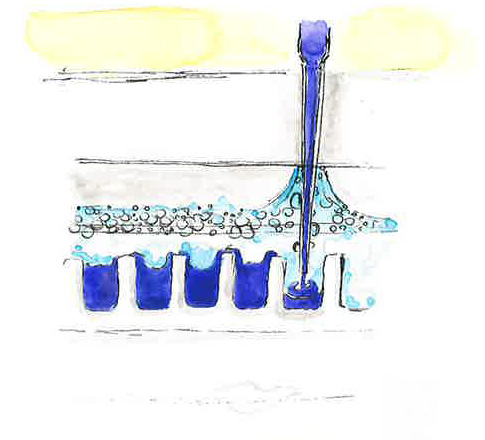
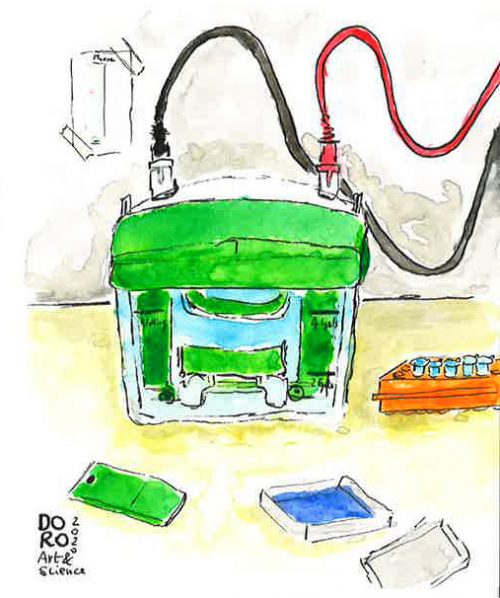
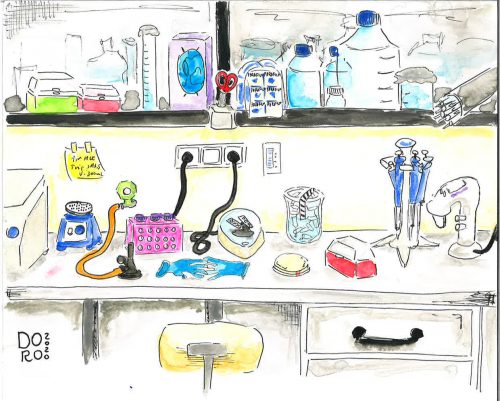
 (5 votes)
(5 votes)